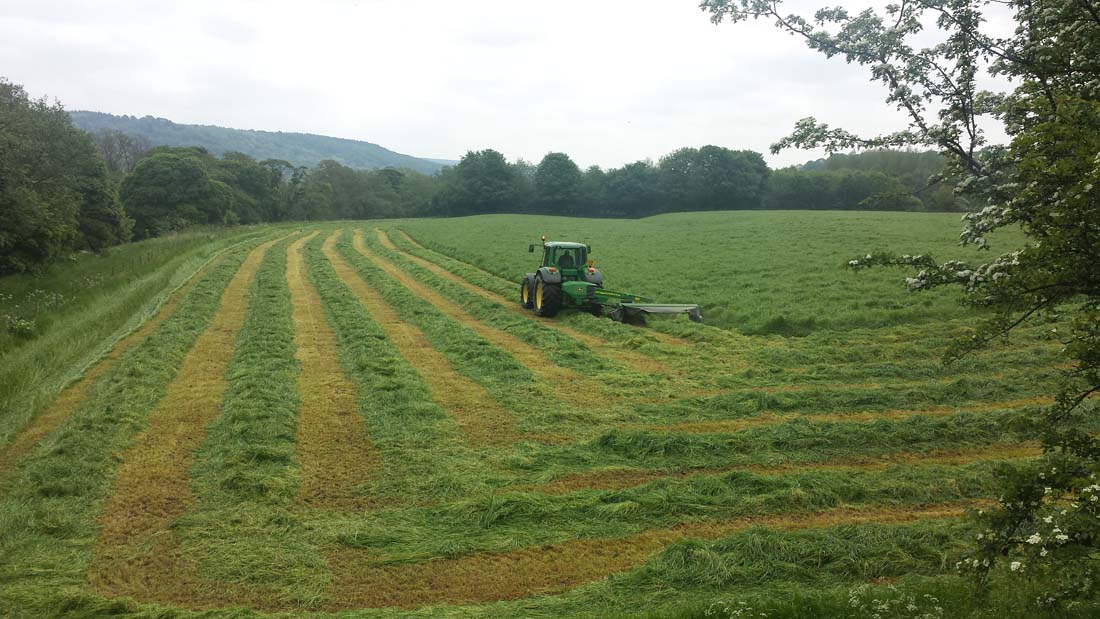
A dairy farm in Derbyshire has seen a 25% uplift in silage yields this summer following involvement in a nationwide initiative that is exploring the benefits of proactive grassland management.
Melvyn and Diane Shepherd, and their sons Mark and Darren – who farm Birchills Farm near Bakewell – have spent the last year working closely with grass seed experts from Barenbrug as part of the company’s Grass into Gold scheme.
Twelve months after signing up to Barenbrug’s pasture performance programme, the family team has exceeded their 15 tonnes of grass per acre average – producing more silage than ever before and pushing their silage cutter’s capabilities to the limits.
In 2015, following advice from Roger Bacon – Barenbrug’s North of England forage grass expert – Darren and his family decided to renovate two fields on the 550-acre farm.
The first step was to reseed the fields with a perennial ryegrass mixture designed to produce high quality silage from a three-cut system.
The mix, which includes Spelga, Tyrella, Pastour, Dundrum and Malone – one of the highest yielding intermediate tetraploid varities available – was sown on one field in July, then another in September.
As the new swards emerged, some chickweed and docks started to appear, which were quickly treated with help from Barenbrug’s Grass into Gold partner, Dow.
With the grass able to grow unhindered, the first field, which germinated within a week, went on to perform exceptionally well delivering 20 tonnes per acre this summer; the biggest cut ever seen at Birchills.
Results were equally impressive on the second field, which delivered 17 tonnes per acre – an amazing result considering the grass sat under water for most of the winter following the severe floods that affected north west England last December.
'Fields were so waterlogged'
Explaining more, Darren said: "We suspected that results would be good almost immediately after reseeding.
"After just one week the grass in the first field was literally jumping out of the ground – and after eight weeks we had enough to justify a cut.
"Then the bad weather set in and we had one of the wettest winters on record.
"At one point the fields were so waterlogged that we wondered if all our work was going to be wasted – but once conditions dried out, the grass recovered well and quickly bulked up.
"Over the spring the grass just got thicker and thicker, and by the time it came to the first cut we were concerned about how the mower would cope.
"The sward was so dense that our contractor had to drive at half his normal speed. We also had to open the back doors on the mower.
"After cutting, the rows were so deep that the grass underneath took much longer to dry out.
"Needless to say we’ve been really impressed with the results and are now planning to reseed other fields in rotation.
"The first is a 25-acre area that we’ll start working on at the end of the summer."
